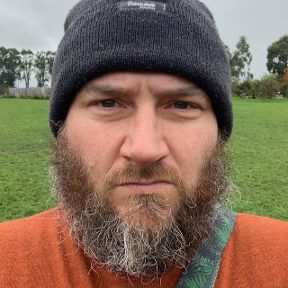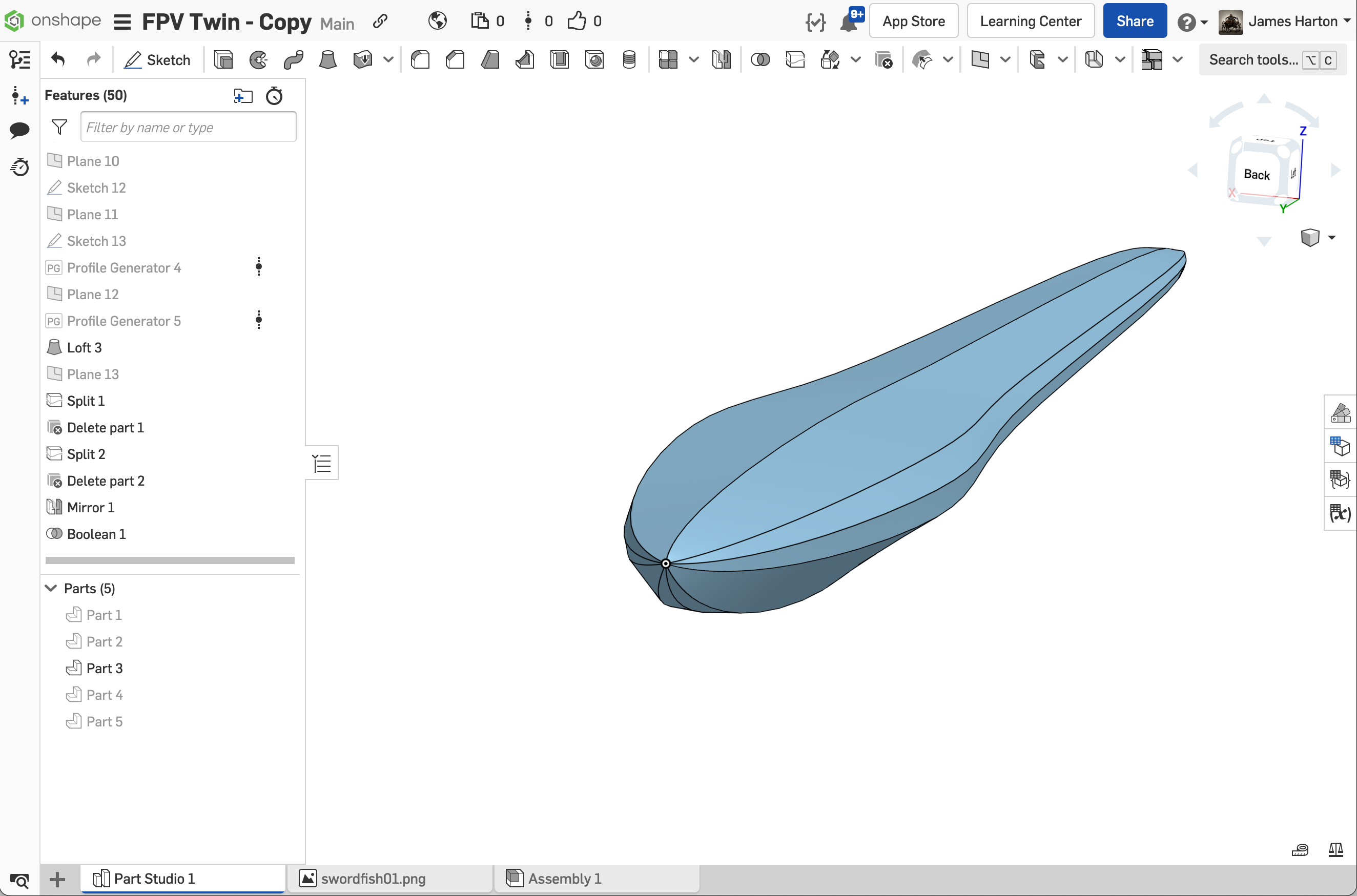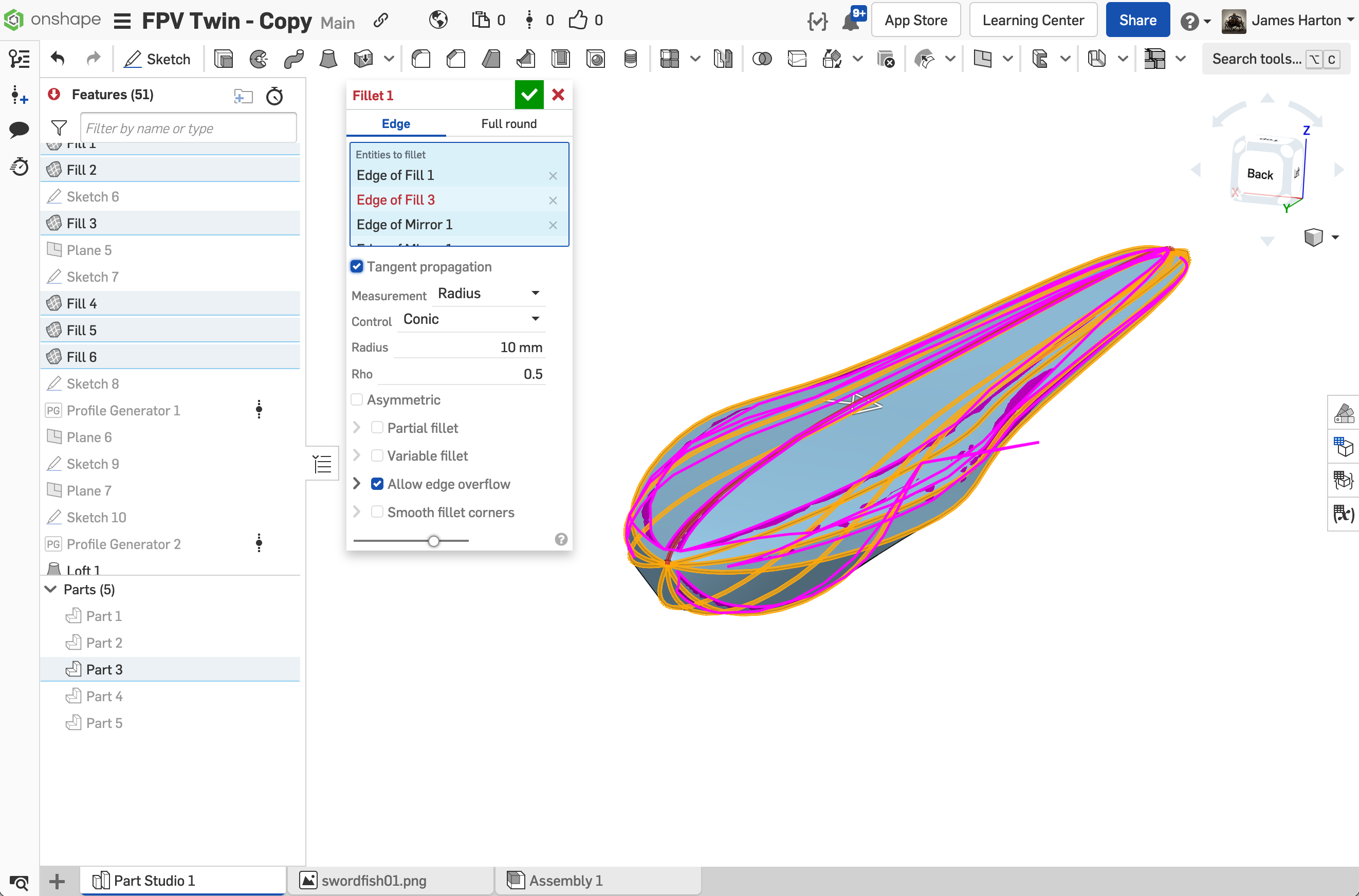Welcome to the Onshape forum! Ask questions and join in the discussions about everything Onshape.
First time visiting? Here are some places to start:- Looking for a certain topic? Check out the categories filter or use Search (upper right).
- Need support? Ask a question to our Community Support category.
- Please submit support tickets for bugs but you can request improvements in the Product Feedback category.
- Be respectful, on topic and if you see a problem, Flag it.
If you would like to contact our Community Manager personally, feel free to send a private message or an email.
Cannot fillet pointy object
 james_harton433
Member Posts: 5 ✭
james_harton433
Member Posts: 5 ✭
Hi folks.
I'm making an RC aeroplane, and I made this fuselage shape by lofting a bunch of surfaces between splines on different planes. It worked well. My problem is that I can't fillet the sharp edges - I think because the nose and tail come to a point (which is one of the reasons I want to fillet it). Screenshots attached. The model is here.
I've tried a bunch of combinations of doing multiple fillets, different options, etc, but I can't make it work. Any suggestions?


0
Comments
It's possible to build these surfaces other ways so that they don't have the same weirdness at the points. You can use the fill surface tool and select two profiles at a time - it will try to fit a 4-sided surface to those profiles and then trim the surface.
The other issue is that a bunch of fillets all coming together can be very hard to solve for even in the best situation.
What you can do is build a blocker at the two end points - extrude a small cylinder. As long as your fillets don't all overlap, you should be able to add them. Then you can delete face on the cylinders, and fill in the hole.
This guide for Solidworks can take you through some of the tough issues with filleting, and since Solidworks and Onshape are based on the same kernel - Parasolid - the solutions are broadly similar.
https://dimontegroup.com/filleting-master-class/
Simon Gatrall | Product Development Specialist | Open For Work
However right after you add fill 6, one of the edges of fill 1 goes crazy - I believe the expression is yeets off to infinity...
It's also really weird how at the front, the bottom two surfaces are almost horizontal:
Simon Gatrall | Product Development Specialist | Open For Work